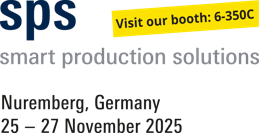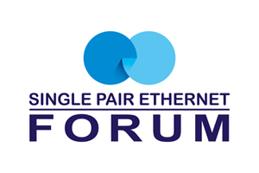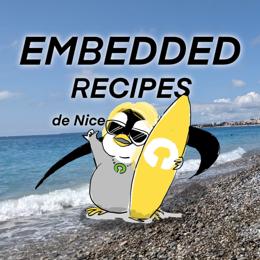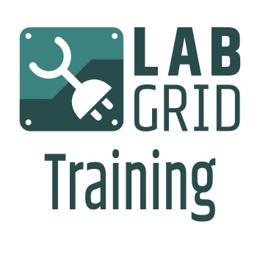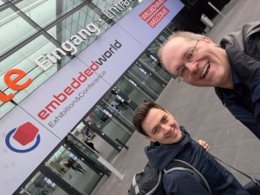GStreamer Conference 2025
This years GStreamer conference was held at the end of Oktober in London, UK. Since GStreamer is our goto-framework for multimedia applications, Michael Olbrich and me were attending this years conference to find out what's new in GStreamer and get in touch with the community.
The conference took place in the Barbican Centre, a performing arts centre within the brutalist buiding complex of the Barbican. This location alone is worth a visit and provides a nice setting for a conference. Having the hallways track and coffee and lunch breaks in the conservatory at Level 4 adds an extra touch.
The GStreamer State of the Union talk by Tim-Philipp Müller kicked off the conference. There should be the GStreamer release 1.28 by the end of this year. Overall, Rust is still a large and growing area in GStreamer. The mentioning of the reduced binary size of the Rust plugins caused some murmuring in the audience. Furthermore, there are also new bindings for C++ and Go to improve the use of GStreamer in C++ and Go applications. During the conference, there were further talks on the state of certain development areas, for example on the Video4Linux ecosystem.
Since I am interested in video encoding and decoding, the talks about Tools to profile a video encoder, soothe: a proposal for encoder testing and Virtual Hardware: Emulating a Video4linux Hardware Decoder grabbed my attention. Furthermore, the talk about Region-Based Compression in GStreamer shows how region-of-interest can influence the video quality and bit rate of sports broadcasting. In the broadcast of a football game, the audience is responsible for most of the bits in the video stream.
For anyone who is hunting bugs in a GStreamer application, Nicolas gave an introduction into The Art of Debugging GStreamer Software. He started from a very vage bug report, showed how to reproduce and isolate the bug, and ended with a fix in the kernel that caused the problems in GStreamer. There was a quick shoutout to AI as a tool during debugging, but a warning that the AI should not be trusted. One always needs to consult the specification to be sure. How to deal with AI is still an open issue in GStreamer. A discussion between developers followed, about their debugging approaches and pain points when debugging GStreamer. Another interesting talk on debugging and analysis was Showing the invisible: Analysing buffer flow with tracers about a few new tracers to investigate performance issues.
Practical examples in measuring and addressing GStreamer performance were given in Cutting audio latency with bidirectional WebRTC and Improving WebRTC datachannel performance. In both talks the speakers demonstrated how they measured the performance of their pipeline to identify and finally fix bottlenecks and misbehavior in their GStreamer based systems.
There were also talks that went into a technical deep-dive. State of MPEG-TS in GStreamer goes into the history of MPEG-TS, differences between the specification and current implementations, and the implementation of new GStreamer elements. PipeWire’s pipeline operation vs GStreamer’s explained discusses the differences between the scheduling in PipeWire and GStreamer. This is especially interesting for anyone using both systems together, because the real-time scheduling of PipeWire needs to be considered when connecting GStreamer and PipeWire pipelines.
As an example for GStreamer in real-world applications, Laertes showed how they use GStreamer in medical training in GStreamer in the Medical Simulation Environment. GStreamer in VR devices manufacturing presents how GStreamer is used to test and calibrate the Meta Quest VR headsets.
Analytics and AI were also a topic at the conference but not quite as hyped as in the last few years. From Streams to Insights: Advancing GstAnalytics shows how GSTAnalytics makes the integration and negotiation of tensor formats in GStreamer pipelines more seamless and flexible. Audio source separation using snakes, crabs and torches presents how to use the demucs plugin to remove the voice from audio files in an karaoke applications.
On the weekend after the conference, we and many other attendees of the conference stayed in London for the GStreamer hackfest, to experiment with newly found GStreamer plugins and technology or continue their existing projects with the experts at hand.
Weiterführende Links
Pengutronix auf der SPS in Nürnberg
Nach einigen Jahren Abwesenheit sind wir in diesem Jahr zurück auf der SPS 2025 in Nürnberg! Sie finden uns in Halle 6, Stand 6-350C. Wir freuen uns darauf neue und bekannte Freunde, Partner und Kunden zu treffen. Wie immer zeigen wir Demonstratoren zu aktuellen Themen an unserem Messestand.
Pengutronix beim Single Pair Ethernet Forum in Ludwigsburg
Single Pair Ethernet (SPE) sind mehrere neue Ethernet Standards, bei denen die Kommunikation über nur ein einzelnes Adernpaar funktioniert. Embedded Linux ist dabei gerade auch für kleinste, über SPE angebundene Knoten bestens geeignet. Pengutronix ist dieses Jahr Partner des Single Pair Ethernet Forums in Ludwigsburg und trägt darüber hinaus einen Vortrag bei.
Talks, Workshops und Zeit am Strand - Die Embedded Recipes 2025
Ich war dieses Jahr Teil einer kleinen Delegation Pengutronixianer, die an der Embedded-Recipes-Konferenz in Nizza, Frankreich teilgenommen haben. Wir hatten eine tolle Zeit in Nizza und wollen jetzt die Gelegenheit nutzen nochmal einen Blick zurück auf unsere Lieblingstalks und unseren labgrid-Workshop zu werfen.
Labgrid Hands-On Training at Embedded Recipes 2025
We are happy to announce that we are hosting a one-day version of our hands-on labgrid training at the Embedded Recipes in Nice, France. The workshop takes place on day three of the Embedded Recipes (16.05.2025) and is part of the workshop track. The workshop is free of charge, but registration is required.
Rückschau: Embedded World 2025
Das war sie wieder: Die Embedded World 2025 in Nürnberg! Eine spannende Woche mit vielen anregenden Gesprächen mit den Besuchern auf unserem Messestand und mit vielen anderen Ausstellern liegt hinter uns. Für mich das war das wichtigste Takeaway: Ohne gut wartbaren Mainline-Linux Kernel, ohne Secure Boot und ohne Updating und Wartungsstrategie wird es im Zeitalter des Cyber Resilience Acts nicht mehr gehen!
Pengutronix at Electronica 2024 in Munich
Electronica trade fair in Munich, Germany is just around the corner and Pengutronix is currently gearing up to showcase some of our latest topics and developments. You find us in Hall B4 Booth 102 (map).
Was ist neu in Weston 13?
Vergangenen Dienstag wurde Weston 13.0 released. Der Release enthält einige neue Features, die wir für unsere Anwendungsfälle in Embedded Systems entwickelt und nach Upstream gebracht haben. In diesem Blogpost wollen wir die für uns relevanten neuen Features — Multi-Backend, OpenGL Renderer für die PipeWire und VNC Backends, und Überlappende Outputs — erläutern und zeigen, wieso diese für Embedded wichtig sind.




